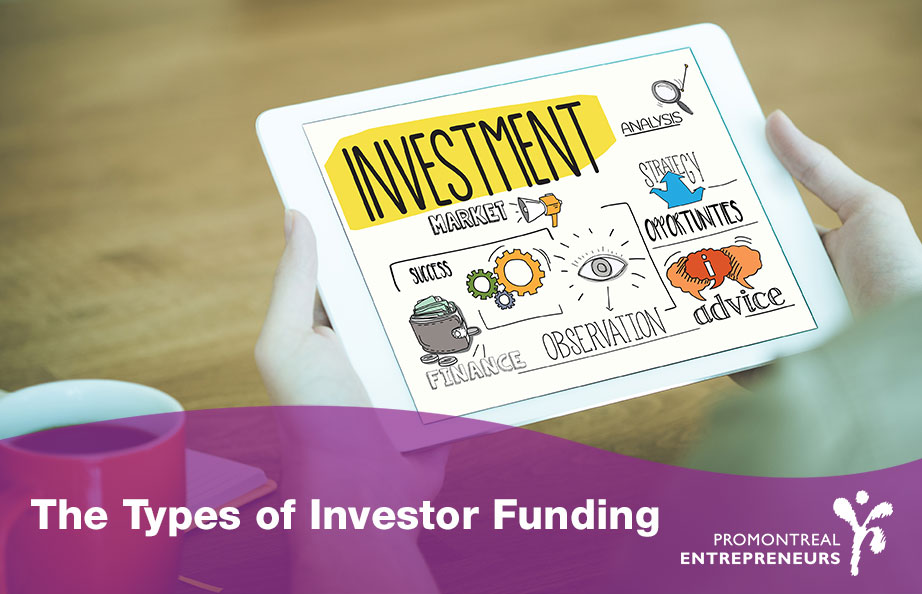
When it comes to funding a business there are many options. Before you decide to seek funding from investors, it’s important to know that there is more than one type of investor to fundraise from. So, how are they different, and how are you going to do it?
There are three basic types of investor funding: equity, loans and convertible debt. Each method has its advantages and disadvantages, and each is a better fit for some situations than others. Like so much else about the fundraising process, the kind of investor-based fundraise that is right for you depends on a number of factors. The stage, size and industry of your business. Your ideal time frame; the amount you are looking to raise and how you are planning to use it; as well as company goals for both the short-term and long-term.
EQUITY
Pursuing an equity fundraise means that, you are buying an ownership stake. Equity investors provide capital in exchange for a percentage of the profits (or losses).
Equity is one of the most sought-after forms of capital for entrepreneurs. In part because it’s an attractive option: no repayment schedule and high powered investor partners.
How It Works
At the outset of your fundraise, you set a specific valuation for your company. Based on that valuation and the amount of money an investor gives you, they will own a percentage of your company. For which they will receive proportional compensation once your company sells or goes public.
When to Do It
Not every business will start generating income as soon as it launches. Spending a few years in R&D doesn’t mean your company isn’t a viable business proposition. Internet companies, for example, are notorious for going years in operation without even attempting to charge their customers. If you’re going to need a lot of operating cash to sustain your business before it starts turning a profit, equity investments are the only form of capital that makes sense.
When there is no collateral
To obtain a loan, you must have something to provide as collateral in the event that things do not go as planned. If you don’t have something of value to give loan providers as collateral, your only real choice for funding is to find equity investors prepared to take a risk on your idea with nothing to “sell” if it fails.
When you can’t possibly bootstrap
While home-growing your company from your garage or spare bedroom bit by bit may not sound as glamorous as hitting the ground with investors already in your lineup, most investors will expect you to start there before they invest. But some businesses require a massive amount of capital just to get off the ground. In those cases, you have little choice but to go directly to equity.
When you’re positioned for astronomical growth
Equity capital tends to follow businesses and industries that have potential for massive growth and exponential paydays. Your local coffee shop concept may do really well, but it doesn’t have the potential to become Facebook. Therefore, you’re not likely to attract many equity investors. On the other hand, if you’re looking to build the next Starbucks chain, chances are investors will be very interested in jumping onto your bandwagon on the road to IPO.
Consider the following:
Your options are whittled down when you have equity:
When it comes to the future of your business, going the equity route drastically limits your options. One thing is essential to equity investors: liquidity. That means they won’t be happy with a percentage of your annual income. They’ll assume that once you’ve accepted their money, your company’s endgame will be a sale or an IPO. They’ll want guarantees that your idea will sell and sell big before they invest in the first place. But, before you go the equity fundraising path, make sure that this is indeed your vision.
For high risks, equity investors expect big rewards:
Many entrepreneurs would take advantage of the fact that they could walk into a bank and get a loan to fund their business idea. Banks, on the other hand, are extremely risk averse and only want to provide loans that they are certain can be repaid. That’s where equity investors come in: they’re willing to take chances that lenders aren’t willing to take. However, there are two sides of that coin: an equity investor isn’t looking for a quick return on their investment. They’re taking on a lot of risk in exchange for a lot more reward, and they’re going to want to see results.
There’s a lot of competition for equity investments:
The number of people searching for equity investors far outnumbers the number of checks being written. In a given year, most equity investors will see hundreds of transactions before funding even one. Obtaining an equity investor is extremely difficult!
Raising equity capital takes time:
Finding the right investor will take anything from 3-6 months. That doesn’t include the time it takes to finish the final legal papers that release the funds. If you and your company are in a hurry, equity funding may not be the best option.
When it comes to relinquishing equity, it is a one-way path;
You can’t get your equity back after you’ve given it up. It’s extremely unlikely for an entrepreneur to repurchase the equity they gave away early in the company’s growth. If you’ve sold a certain amount of your business—say let’s 40 percent—you won’t be able to sell it again. Whether you like it or not, once you sell equity to an investor, they become a part of your life. As tempting as it may be to shake hands with anyone willing to write you a check, it’s critical to seek out investors with whom you feel comfortable working for years to come.
LOANS
Loan or debt-based fundraising is the easiest to understand: you borrow money now and pay it back later, with an established rate of interest.
Debt is also the most common form of outside capital for new businesses. While angel investors and venture capitalists get all the big headlines for funding exciting companies, it’s the debt providers that are behind most of the investment dollars.
How it Works
When you opt for debt-based fundraising, you specify the interest rate associated with loan repayment in your fundraise terms. Additionally, you may include an estimated time frame for loan repayment.
The other critical component of the loan puzzle is collateral: something tangible, sellable that lenders can take from you if your business fails and you are unable to repay your loans. The more collateral you have, the more likely you are to secure substantial financing.
When Do You Do It?
There are a few situations where debt, like equity, is the best choice for funding your business.
When you don’t require more than $100,000
Debt raises are well-suited for small amounts of capital. Giving up equity makes little sense at such small amounts; and with smaller goals, there is less risk—for investors and entrepreneurs alike—than when large sums are involved.
When you urgently need funds
Is there a market opportunity for your company that you would miss if you do not raise money immediately? Then you’d be wise to avoid equity—a procedure that is notoriously time-consuming. Debt increases pass more quickly, increasing your chances of having the money you require when you require it.
When there isn’t any equity available
If you are unable or unwilling to begin offering equity, a debt raise may be the best course of action. Many business owners are hesitant to give up control of their company and a straightforward debt raise offers the appealing benefit of retaining ownership and control.
Consider the following:
Collateral is king: Contrary to popular belief, banks and other lenders do not profit handsomely from a single loan. As a result, they say “yes” to only those transactions in which they are certain they will not lose money. Their sense of security is derived from collateral.
Explore your options: When considering funding options, it’s critical to thoroughly investigate all of your debt options to determine what’s available and from whom. Our approach to debt is as follows: it is always preferable to have financing and not need it than to require financing and not have it!
CONVERTIBLE DEBT
Convertible debt is essentially a hybrid of debt and equity: you borrow money from investors with the understanding that the loan will be repaid or converted into shares in the business at a later date—for example, following another round of fundraising or reaching a certain valuation.
How It Works
At the time of the initial loan, the specifics of how the debt will be converted into equity are established. Typically, this entails offering investors some sort of incentive to convert their debt to equity, such as a discount or warrant in the subsequent round of fundraising.
If investors are offered a discount-the most common are 20% and 25%- it means they are able to convert their loan at a reduced rate of 20% or 25%. For instance, if an investor lends you $1 million to you in the first round, they would expect to get $1.25 million in return.
Likewise, a warrant is also expressed in percentages—for example, 20% warrant coverage. Consider the same $1 million case with 20% warrant coverage. In the subsequent round, the investor receives an additional $200,000 (20% of $1 million) in securities.
You will also need to set an interest rate, just like you would for a straight debt raise, to reimburse your investors until they convert, as well as those who do not convert.
Additionally, convertible debt fundraises typically have a “valuation cap,” which is a maximum company valuation at which investors can convert their debt to equity, after which they will have missed the boat and will have to settle for having their loan repaid or reinvesting in the company on new terms. However, over the last few years, an increasing number of companies have chosen to leave their convertible debt offerings uncapped.
When To Do It
For start-ups that are not yet prepared to evaluate the company, a convertible debt fundraise makes the most sense either because it is too early to determine one, or because they believe the value will be much higher later.
If you believe that the valuation of your business may well be skyrocketing soon, but you can’t wait and raise your equity straight away later—the ability to offer convertible debt offers you the money you need right now while enabling you to protect your equity’s value later.
Things to Keep In Mind
The best of both worlds; Convertible debt offerings offer investors the best of both worlds. For the time being, they have the debt structure’s exit strategy and the associated security; however, they also have the potential for a discount on your equity if they choose to convert. Additionally, investors get to observe how your business performs, which enables them to gather additional information and determine whether they like your direction before jumping on the equity train.
Know what you’re doing: Because convertible debt raises are by definition more open-ended than debt or equity, it’s critical that you can articulate both the rationale for your decision and an expectation of how things will unfold, both for yourself and for the investors.
Conclusion
Prior to committing to a structure for your fundraise, it’s prudent to delve deeper into the specifics of that structure—or, better yet, thoroughly explore each option.
Avoid becoming frustrated or discouraged: this is a large question to address, and even experienced entrepreneurs are not comfortable with all forms of capital. The more informed you are about your options, the better equipped you will be to make the best decision for you and your business, and the more likely your fundraising efforts will succeed.








 Either you have been racking your brain for weeks trying to come up with a business idea or a struck of genius just came to you. Regardless of how it came to you, you believe that this is the business idea that is going to make you an entrepreneur! Great, now what? You are probably very excited to get the ball rolling and you have so many different thoughts going through your mind. It becomes little overwhelming as you don’t know where to start or how to start. How do you start taking action in order to create your dream into a reality? Here’s how! Read carefully as we will give you some guidelines that will help push you in the right direction.
Either you have been racking your brain for weeks trying to come up with a business idea or a struck of genius just came to you. Regardless of how it came to you, you believe that this is the business idea that is going to make you an entrepreneur! Great, now what? You are probably very excited to get the ball rolling and you have so many different thoughts going through your mind. It becomes little overwhelming as you don’t know where to start or how to start. How do you start taking action in order to create your dream into a reality? Here’s how! Read carefully as we will give you some guidelines that will help push you in the right direction.


